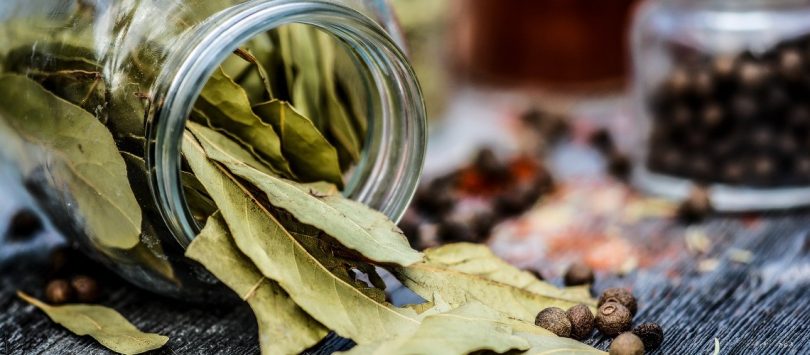Drying bay leaves is a common practice among households. In fact, this technique has been practiced for centuries. Dried bay leaves can be used for cooking, flavoring, and even as herbal remedies.
You can use them to season your meats, soups, stews, and sauces, as well as add a subtle aroma to your steamed vegetables or fish. You can also use them to soothe inflammation and muscle aches, as well as keep out weevils and other pests.
Easy Methods of Drying Bay Leaves
How to prepare bay leaves for drying
Herbs meant for drying must be gathered during warm, sunny days because they tend to produce more oils during this time of the year. It is not ideal to get them during rainy days. You should also pick them before their leaves begin to toughen up.
For bay leaves, you should pick them from plants that are at least two years old. The most ideal time to get them is in the morning after the dew has evaporated. Be gentle when picking them. Refrain from bruising or tearing the leaves. See to it that you also sort them out carefully. Remove any withered or dead leaves.
Then, you should quickly blanch them by dropping them into boiling water for a maximum of five seconds. This process allows them to dry more easily and quickly. If you do not have time to blanch, you should rinse the bay leaves under running water to remove any dust or dirt. Shake off excess water and pat them dry with a clean towel.
Drying is actually the oldest method of food preservation. It is also among the safest and easiest methods of preserving foods for later use. For bay leaves, you can do the following:
Drying bay leaves naturally
You can dry bay leaves naturally by leaving them in a room that is dry, low in humidity, and hot. The room should also be properly ventilated. It is not advisable to leave the bay leaves out in the sun because this can make them wilt and lose their flavor and aroma.
You can tie them up into small bunches using a thin string if you intend to hang them upside down to dry. However, it is better to dry them individually. Here is the step-by-step process on how to air dry your bay leaves:
- Get a baking sheet and cover it with one layer of paper towels.
- Spread out the bay leaves. Give them ample space. Make sure that they do not overlap with one another.
- Leave the bay leaves in the room. Make sure that they are not directly exposed to any form of light.
After one week, flip the bay leaves over to make sure that both sides dry evenly. Leave them alone for another week.
After two weeks, you can gather the dried bay leaves. However, if you notice any dark green spots on them, you can leave them to dry for another week.
Drying bay leaves with a food dehydrator
Using a food dehydrator is the easiest, fastest, and most ideal way to dry bay leaves. After you rinse them, you can place them on a dehydrator tray. Let them dry for one to four hours. Make sure to check them regularly as well. You can tell that they are dry when they break and crumble when bent. Here are the step-by-step instructions:
- Pre-heat the food dehydrator to 95ºF to 115ºF or 35ºC to 46ºC. You may need to set it to a higher temperature if you live somewhere with high humidity.
- Put the dehydrator tray inside the food dehydrator. Leave it there for one to four hours. Check after every hour.
- Check the condition of your bay leaves. They are dry when their stems fall apart and they curl.
READ ALSO: Which Food Dehydrator is Right for You
Drying bay leaves in an oven
This is another great way to dry bay leaves. It allows them to dry individually. To dry bay leaves in the oven, simply follow these steps:
- Remove the bay leaves from their stems, wash your leaves.
- Place them on a paper towel. Do not let them touch one another. Let the towel absorb their moisture.
- Use an oven tray (preferably with holes) and place a baking sheet on it.
- Spread the bay leaves on the baking sheet so that they don’t touch. Add another sheet and another layer of bay leaves. Do this a few times, place max 5 layers.
- Set your oven to the lowest temperature, max 200F (100C), and put the tray on the lower rack. You can leave a small gap in the oven door to improve the air circulation.
- They are ready when they are dry and brittle. This should take one to two hours. Make sure you check your leaves every 15 minutes to avoid burning.
Drying bay leaves in a microwave oven
Drying bay leaves in a microwave oven is recommended if you only have a few pieces to dry. Even better, it only takes two to three minutes to achieve your desired results. Here are the step-by-step instructions for this method:
- Rinse the bay leaves in cool water to remove dirt.
- Pat them dry with a paper towel.
- Remove their stems.
- Arrange them in a single layer on a microwaveable plate.
- Place them in the microwave and let them dry for thirty seconds. Flip them over and let them dry again. Flip them once more after thirty seconds. Repeat this step for four to six times or until the bay leaves have become brittle and dry.
SEE ALSO: How to Dehydrate Food Successfully: A Beginner’s Guide
How to Store Dried Bay Leaves
Dried bay leaves can last for one to two years if they are stored properly. Otherwise, they can develop mold. You can store your bay leaves whole. You can also crush the leaves with a rolling pin if you prefer to turn them into a powdered form.
READ ALSO: How to Store Dried Bay Leaves
Drying bay leaves is easy and practical. It lets you have a steady supply of this spice. After drying the bay leaves, you have to store them in an airtight container and keep them in a cool, dark place so they can retain their aroma and flavor. You can also store them in a glass bottle. However, you should opt for a dark colored glass bottle to protect the bay leaves from light and preserve their color.





